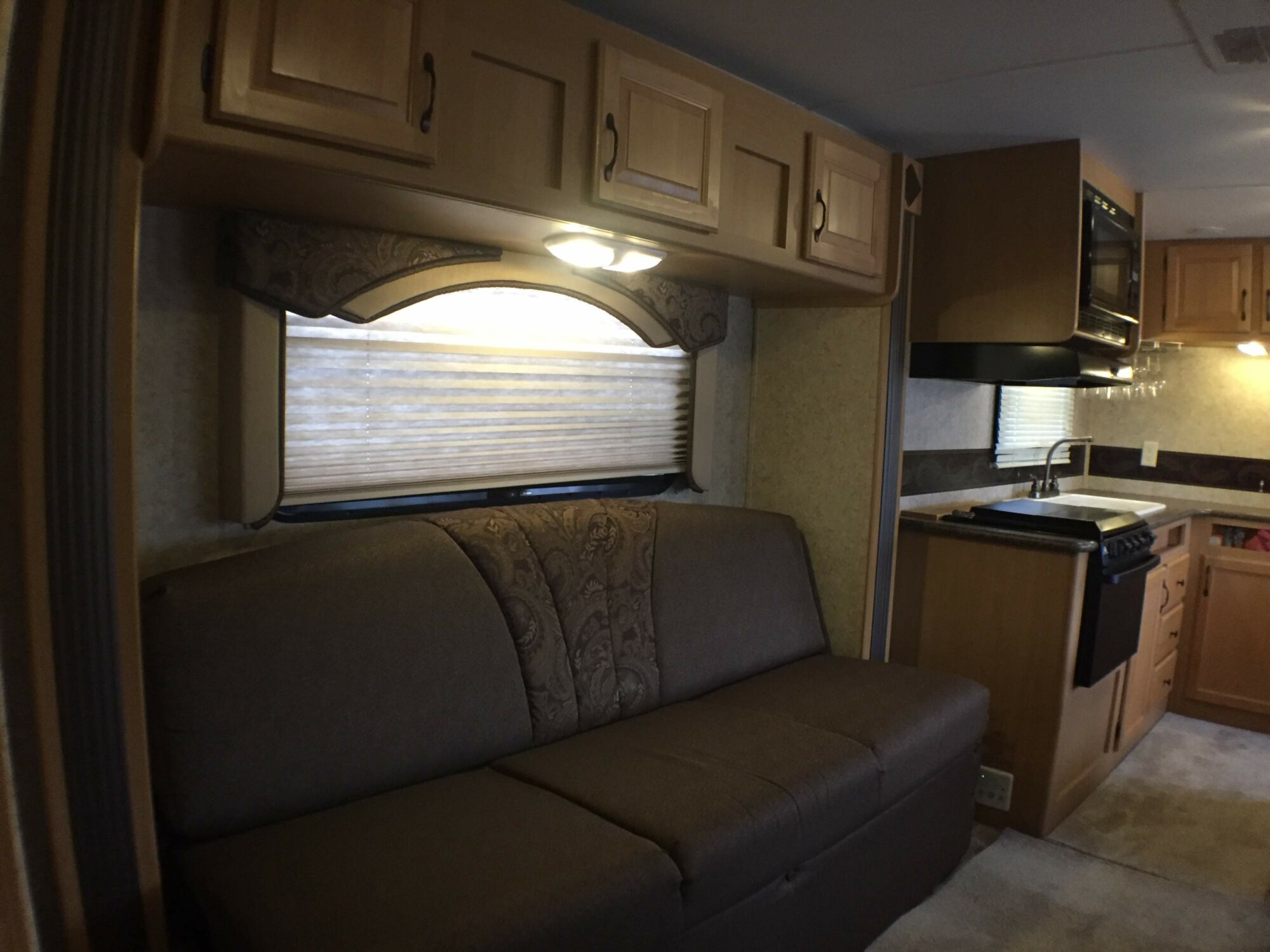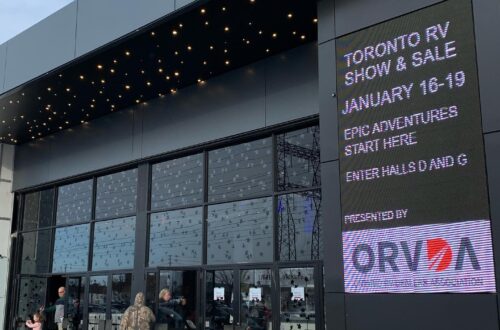Three questions to answer when buying an RV
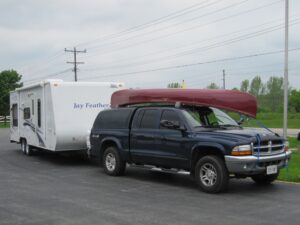
There are so many decisions to make when you’re buying an RV. Do you want a motorhome you can drive or a trailer you can tow? Do you have a vehicle you can tow with? What size are you comfortable with? How many people do you need to accommodate? What features would you like?
If you’re anything like us, shopping for an RV quickly becomes an obsession! We trolled websites, attended trade shows and visited RV dealers. Each “container” (as our then 2-year old daughter liked to call them), offered new possibilities and fresh excitement.
Is there really a perfect RV out there?
Maybe not, but we think the Tin Can Cottage is pretty darn close--at least for this stage of our lives. And we were able to buy our ideal RV very quickly by answering these three key questions.
1) Do you want to buy a motorhome or a trailer?
Our past RV experiences were both motorhome trips: one in a van conversion, one in a Class C motorhome. Motorhomes are fantastic for road trips as they require minimal set-up. Park it, plug it in and you’re pretty much good to go!
For our style of camping, however, a travel trailer is best. While we do some road tripping, we usually stay in one spot for a few days or even a week. It’s nice to have a vehicle handy to day-trip, versus bringing an entire motorhome with us. While many people have Motorhome Toad (tow a smaller car behind the RV) to get around the mobility aspect, we did not want to have to maintain another vehicle engine.
The decision to buy a travel trailer was made easier because we already owned a pick-up truck. At the time, we were driving a v8 Dodge Dakota 4x4, so we were limited by its towing capacity. However, there was still a lot to choose from!
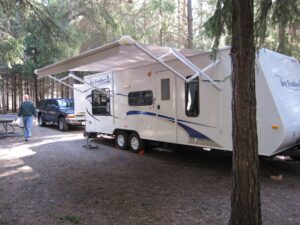
We looked at tent trailers, hybrids, and lightweight travel trailers, which were all quite tow-able with our truck, but agreed a hardtop travel trailer would best suit our needs. We anticipated some early-spring/late-fall camping and the travel trailer would be warmer than a tent trailer or hybrid.
As parents of a toddler, we also appreciated the fast set-up of a travel trailer versus a tent version.
2) What do you need in a layout?
With the format decision out of the way, the next most important thing for us was the layout. There are SO many layouts available--truly something for everyone! We agreed on this short wish list:
- A living area separate from our daughter’s bed. She was just little and we weren’t ready to go to sleep when she was. We wanted to be able to sit up and play cards or watch a movie if it wasn’t campfire weather.
- A bathtub. Again, with a toddler, this was a must!
- A kitchen with ample cooking space. Of course, “ample” space is all relative in a trailer! We love to cook, so wanted an oven/stove, fridge/freezer and enough counter space to prep.
There were a few other “nice-to-haves” on our list, but these were the deal breakers.
3) How is the RV constructed?
Yep. You read that right. Construction may not be the sexiest part of buying a trailer, but it sure is important.
When we started researching RVs, Colin came across a manufacturer named Evergreen. Unlike others, they did not use any wood in the walls of their trailers. This is important because wood and moisture are not friends. As soon as you get moisture into the walls of a trailer constructed with wood, bad things happen.
Unfortunately, the Evergreen exceeded the towing capacity of our Dakota, so we went with a Jayco Jay Feather EXP 254--one of the few hard-top, non-hybrid models in this series.
The Jay Feather was a great little trailer! At less than 5,000 pounds dry it was super light. The layout was terrific, with a queen bed at each end, giving us plenty of space after our daughter went to bed. And the kitchen had more counter space than other trailers in its class.
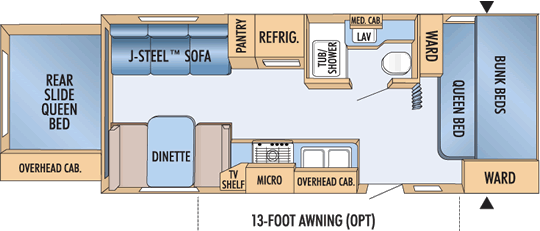
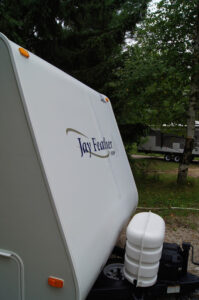
However, after five years of regular use, we noticed a bubble in the fibreglass front of the trailer. We learned this was delamination, which is what can happen when moisture gets into the trailer walls. Basically, the water seeps into the wood in the middle and, without any means to escape, the moisture eventually weakens the glue or rots the wood and causes the fibreglass to bubble away from the substrate.
Colin had religiously sealed the roof of the trailer, but it was too late. Water can get in through the tiniest of holes and delamination is difficult to detect until it’s quite advanced.
We considered fixing the problem, but it wasn’t going to be easy, or cheap, so we decided to look for a new trailer. This time, we were going for our original choice--the Evergreen--as a recent upgrade to a Ford F150 meant towing capacity was no longer an issue.
Enter the Tin Can Cottage
Sadly, Evergreen RV went out of business in 2016, so buying a new RV was not an option. But, we found a 2011 model with the ideal layout listed for sale in the Ottawa area and made the four and a half hour drive to check her out.
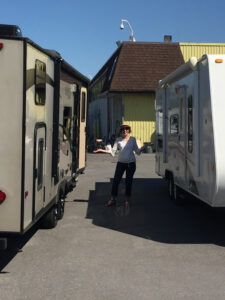
Not only did this trailer have beds at opposite ends of the trailer, it actually had a separate master bedroom. The trailer itself was in great condition, and the dealer was willing to give us a decent trade-in on the Jay Feather.
But what really sold us on this model was the L-shaped kitchen. So. Much. Space. From the moment we saw it, we could picture ourselves cooking side-by-side.
So, is this our perfect trailer? Like I said in the beginning, there may not be a “perfect” trailer, but this one is great for where we are right now. There are a few things we’d like to change, but they’re mostly cosmetic.
In fact, we’ve just embarked on our first round of interior renovations in preparation for the 2019 camping season and will be sharing our progress here on the blog in the coming weeks.

